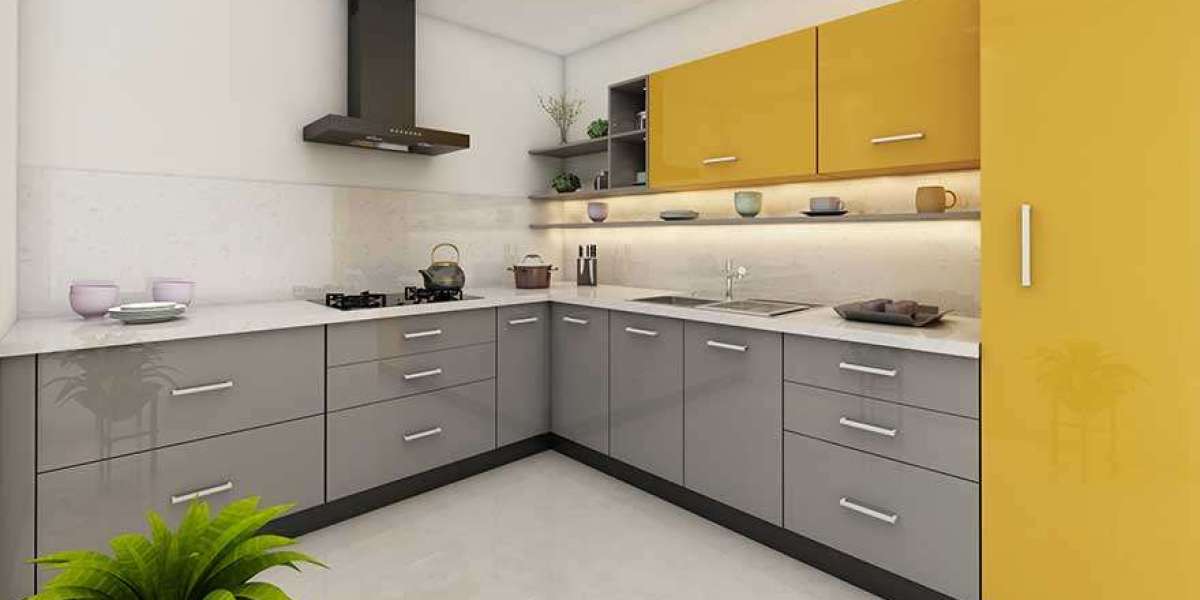With increasing urbanization and smaller living spaces, the way kitchens are designed has changed drastically. Modular kitchen design has emerged as a solution that not only optimizes space but also adds remarkable functionality and style to any home. Understanding how modular kitchens work and the benefits they offer can help homeowners make informed choices when planning their kitchen space.
Understanding Modular Kitchen Design
Modular kitchen design refers to a systematic approach to kitchen planning where the kitchen is divided into modules or sections. Each module has a specific function, such as storage, cooking, washing, or preparation. These modules are pre-fabricated and can be installed in a customized layout according to the available space and user requirements. Unlike traditional kitchens, which are often built on-site with limited flexibility, modular kitchens are versatile and allow homeowners to adapt the design as their needs change over time.
The primary advantage of modular kitchen design lies in its ability to make efficient use of every inch of space. In small apartments or homes with limited kitchen areas, modular designs can maximize storage and work surfaces without making the kitchen feel cramped. Every drawer, cabinet, and countertop is strategically planned to ensure that essential items are easily accessible while keeping the overall area organized.
Maximizing Space Efficiency
One of the most significant benefits of modular kitchen design is space optimization. In modern homes, kitchens are often compact, and traditional storage solutions may not be sufficient to accommodate all utensils, appliances, and pantry items. Modular kitchens address this challenge by incorporating intelligent storage solutions such as pull-out cabinets, corner units, and overhead compartments.
For instance, corner spaces, which are often wasted in conventional kitchens, can be utilized effectively with rotating carousel units or pull-out drawers. Vertical space is also maximized by installing tall cabinets that reach the ceiling, providing ample storage for items that are not frequently used. By combining these design elements, a modular kitchen design can ensure that everything has its designated place, reducing clutter and creating a more functional environment.
Enhancing Functionality Through Ergonomic Design
Modular kitchen design is not just about storage; it also focuses on improving workflow and functionality. An ergonomically designed kitchen allows users to move effortlessly between the cooking, washing, and preparation areas. This concept is often referred to as the kitchen work triangle, where the stove, sink, and refrigerator are placed in a triangular layout to minimize movement and increase efficiency.
In a modular kitchen, each module is designed to serve a specific purpose. Cooking modules can include built-in stovetops, ovens, and microwave spaces, while washing modules are equipped with sinks and dishwasher areas. Preparation modules provide ample countertop space for chopping, mixing, and assembling meals. By clearly defining each module, modular kitchen design ensures that daily tasks are completed smoothly and quickly, making the cooking experience more enjoyable and less stressful.
Customization and Personalization
Another significant advantage of modular kitchen design is the ability to customize the layout according to personal preferences. Homeowners can choose the materials, finishes, and colors that best suit their interior style. Cabinets can be designed with different types of doors, handles, and shelving configurations. Countertops can be selected in various materials such as granite, quartz, or laminate to match the overall aesthetic of the kitchen.
This level of personalization is particularly valuable in modular kitchen design because it allows each kitchen to reflect the homeowner’s style while remaining highly functional. Whether one prefers a minimalist, contemporary, or traditional look, the modular approach provides the flexibility to achieve the desired appearance without compromising on practicality.
Incorporating Modern Technology
Modern kitchens are increasingly incorporating technology to enhance convenience and functionality, and modular kitchen design is well-suited for this integration. Built-in appliances, such as refrigerators, ovens, and dishwashers, can be seamlessly incorporated into the modules, creating a sleek and organized appearance. Smart kitchen gadgets, including induction cooktops, automated lighting, and touchless faucets, can also be accommodated within the modular framework.
These technological integrations not only improve efficiency but also elevate the overall cooking experience. For example, having a designated space for each appliance ensures that countertops remain clutter-free, while smart devices allow for easier meal preparation and energy management. By blending design and technology, modular kitchen design creates a space that is both practical and modern.
Improving Maintenance and Durability
A well-planned modular kitchen is easier to maintain compared to traditional kitchens. Since each module is pre-fabricated with high-quality materials, it is more durable and resistant to wear and tear. Cabinet surfaces can be designed to withstand moisture, heat, and stains, reducing the need for frequent repairs or replacements.
Cleaning is also simplified in a modular kitchen design. Smooth surfaces, pull-out drawers, and organized storage units make it easier to access hard-to-reach areas. By keeping everything in its place, modular kitchens not only maintain their aesthetic appeal but also contribute to a hygienic cooking environment.
Future-Proofing Your Kitchen
One of the long-term benefits of modular kitchen design is its adaptability. As families grow or lifestyle needs change, modules can be rearranged, added, or removed without extensive remodeling. This flexibility ensures that the kitchen remains functional and relevant over time, making it a wise investment for homeowners.
For example, additional storage modules can be added as the need for more kitchenware increases, or a kitchen island module can be installed to create extra preparation space. This modular approach prevents the kitchen from becoming outdated and allows it to evolve alongside the household’s requirements.
Conclusion
Modular kitchen design offers a comprehensive solution for homeowners seeking to maximize space and functionality. By combining intelligent storage solutions, ergonomic layouts, modern technology, and customizable options, modular kitchens transform ordinary cooking spaces into efficient, stylish, and enjoyable environments. The adaptability of modular kitchen design ensures that kitchens can meet changing needs while maintaining their appeal and functionality over time. For anyone looking to create a practical and aesthetically pleasing kitchen, adopting a modular approach is a decision that brings long-lasting benefits and convenience.














